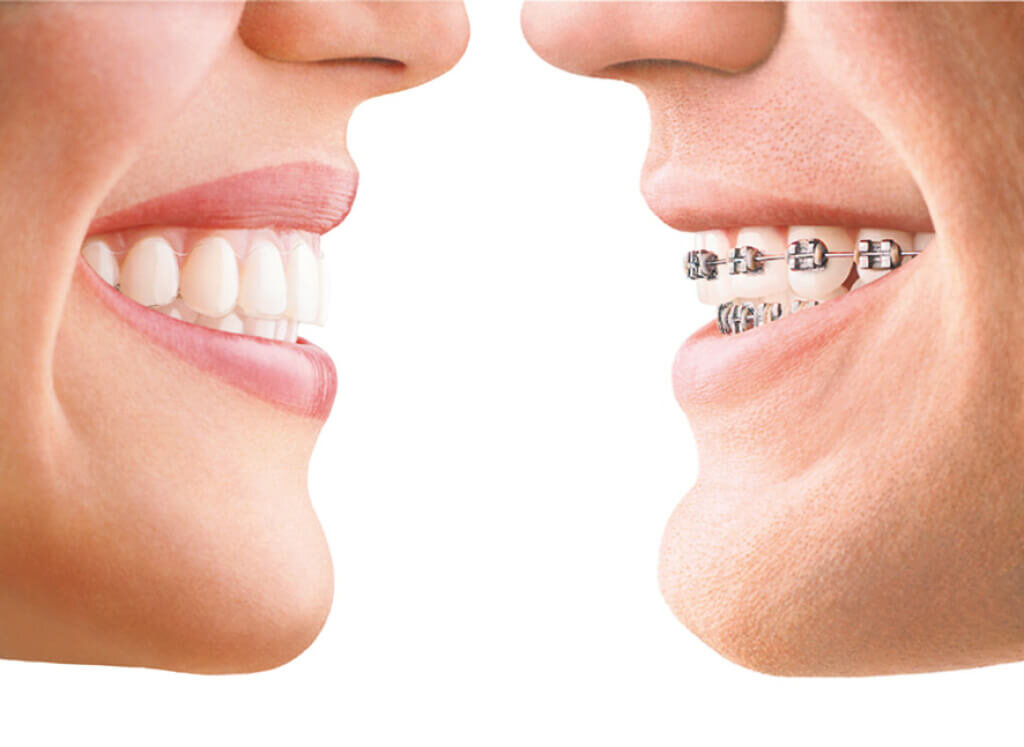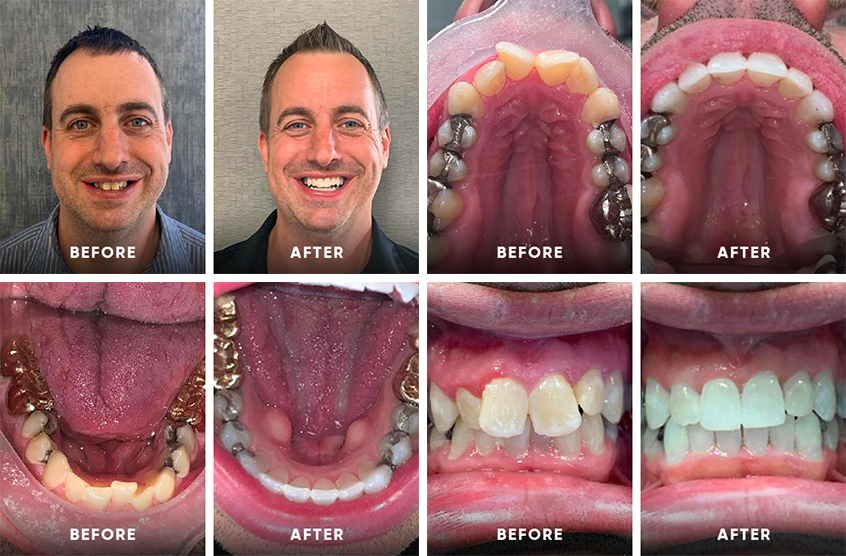Success Stories: How Invisalign Changed Lives and Enhanced Confidence
Success Stories: How Invisalign Changed Lives and Enhanced Confidence
Blog Article
Invisalign vs. Standard Dental braces: Which Alternative Is Right for You?
When thinking about orthodontic treatment, the option in between Invisalign and typical braces presents a number of crucial aspects that warrant mindful assessment. Invisalign uses a very discreet choice with detachable aligners, while typical braces provide a much more noticeable yet reliable solution for severe misalignment. Each choice includes distinct benefits and disadvantages connected to aesthetic appeals, convenience, treatment period, and price. Recognizing these subtleties is crucial for making an informed choice that aligns with your individual choices and lifestyle. The question continues to be: which alternative will finest satisfy your orthodontic requirements and expectations?
Introduction of Treatment Options

In comparison, standard braces are composed of steel brackets and cables that are adhered to the teeth. This method applies continual pressure gradually to attain alignment. While efficient for complicated orthodontic concerns, typical braces need normal check outs for changes and can pose difficulties in preserving dental health due to the problem of cleaning up about braces and cords.
Both choices have their qualities, and the choice frequently rests on certain oral problems, way of living preferences, and patient compliance. Ultimately, getting in touch with an orthodontic specialist is crucial for identifying the most appropriate therapy strategy tailored to private needs. Comprehending the nuances of each choice can substantially affect the general success of orthodontic therapy.
Visual Considerations
A significant variable affecting the choice in between Invisalign and typical braces is the aesthetic appeal each therapy provides. Invisalign aligners are crafted from clear plastic, making them basically undetectable when worn.
On the other hand, standard braces contain metal brackets and wires, which can be extra visible. While developments in orthodontic modern technology have brought about the advancement of smaller sized brackets and colored elastics, traditional dental braces still maintain a more obvious profile. For some people, the presence of braces might deter them from seeking essential treatment.
Eventually, the selection between Invisalign and typical braces might pivot on personal choices concerning aesthetic appeals. Individuals who prioritize discernment often favor Invisalign, while those that are much less concerned regarding presence may choose typical braces. Comprehending the visual effects of each option is important for making an educated choice that aligns with one's way of life and choices.
Convenience and Convenience

In regards to convenience, Invisalign aligners are removable, allowing clients to enjoy their favored foods without limitation and preserve optimum oral hygiene. Cleaning and flossing are simplified, as the aligners can be taken out throughout these routines, whereas traditional dental braces require cautious navigating around brackets and cords.
In comparison, traditional braces necessitate regular modifications, making them much less convenient for those with hectic timetables. In general, the convenience and ease of you could try here Invisalign make it an appealing choice for lots of individuals looking for orthodontic therapy.
Therapy Duration and Effectiveness
While both Invisalign and conventional braces work in correcting dental misalignments, the period of therapy can vary considerably in between both options. Commonly, Invisalign treatment can take anywhere from 12 to 18 months, depending upon the intricacy of the case. The clear aligners work by gradually moving teeth right into their preferred placements, and routine follow-ups with an orthodontist assistance make certain progress continues to be on the right track.
In comparison, typical dental braces frequently need a longer dedication, generally varying from 18 months to 3 years. This results from their set nature and the usage of cords and braces, which can be extra reliable additional hints for intricate instances and extreme imbalances (Invisalign). The therapy efficiency of standard braces is well-documented, as they allow for accurate modifications and greater control over tooth movement
Ultimately, the selection in between Invisalign and standard dental braces may hinge on both the anticipated therapy period and the certain dental issues available. Consulting with an orthodontist is important, as they can offer tailored recommendations based upon specific requirements, making sure the selected technique straightens with preferred outcomes and durations.
Price Contrast and Insurance Coverage Alternatives
Expense plays a considerable role in the decision-making procedure for individuals considering orthodontic therapy, whether opting for Invisalign or traditional dental braces. Usually, the cost of Invisalign arrays from $3,000 to $8,000, while standard braces commonly set you back in between $2,000 and $6,000. Aspects affecting these expenses include the intricacy of the case, the period of treatment, and geographical place.
Many dental insurance coverage strategies provide partial insurance coverage for orthodontic therapies, but the specifics can vary commonly. Normally, typical braces may be more often covered by insurance policy strategies compared to Invisalign, which some insurance this page providers classify as an aesthetic treatment.
In addition, numerous orthodontic practices provide versatile layaway plan, making both therapy alternatives extra accessible. People must inquire concerning possible financing choices and price cuts for ahead of time settlements. Evaluating the total cost, including insurance benefits and layaway plan, is essential for making an informed choice that straightens with both visual choices and budget plan considerations.

Verdict
In recap, the selection in between Invisalign and standard dental braces depends upon numerous variables, consisting of aesthetic preferences, convenience, therapy period, and expense. Invisalign uses a very discreet, removable option that facilitates dental health and dietary flexibility, while traditional braces might be preferable for complex oral problems and typically come at a reduced cost point. Ultimately, consultation with an orthodontist is essential to analyze specific situations and identify one of the most proper treatment alternative for attaining ideal oral positioning.
When considering orthodontic treatment, the selection between Invisalign and traditional dental braces presents numerous essential variables that merit careful examination.Comparing Invisalign and standard braces discloses unique therapy options for orthodontic improvement.While both Invisalign and conventional dental braces are efficient in dealing with dental imbalances, the duration of therapy can differ dramatically between the 2 options.Expense plays a substantial role in the decision-making procedure for people considering orthodontic treatment, whether deciding for Invisalign or traditional dental braces.In recap, the choice in between Invisalign and typical braces pivots on multiple elements, consisting of visual preferences, comfort, therapy period, and cost.
Report this page